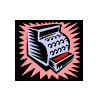

To send a message to an author, click on the author's name at the end of the article.
This Month in Ag Connection | Ag Connection - Other Issues Online
On August 1, Secretary of Agriculture, Ann M. Veneman released $5,218,672 of Environmental Quality Incentives Program (EQIP) funds to the State of Missouri. EQIP provides financial and technical assistance to farmers and ranchers for conservation practices that improve soil, water and air quality; wildlife habitat; and surface and ground water conservation. The following are useful Internet sites for assisting farmers and ranchers in planning, applying, and implementing conservation practices qualifying for EQIP assistance.
http://www.nrcs.usda.gov/programs/farmbill/2002/products.html
Provides a summary of the Natural Resources Conservation Service (NRCS) conservation programs available in the 2002 Farm Bill.
http://www.nrcs.usda.gov/programs/eqip/
Provides:
http://www.mo.nrcs.usda.gov/technical/section4/default.htm
Provides information on various conservation practices (including EQIP
practices). For example, “Restoration and Management of Declining Habitats”
furnishes information on:
EQIP provides farmers and ranchers an opportunity to plan, design, and receive financial assistance for implementing a comprehensive set of conservation practices that will be good for the business, family, and society.
(Author: Parman Green, Agricultural Business Specialist)
This Month in Ag Connection | Ag Connection - Other Issues Online
Harvest should be timely this year to minimize field, harvest and storage losses caused by seasonal stresses. When corn reaches its physiological maturity, it has accumulated all of its potential dry matter. Physiological maturity occurs about 55 to 65 days after silking. This is indicated by the disappearance of the milk line and happens just before the black layer forms at the tip of the kernels. Severe stress after physiological maturity has little effect on grain yield, unless the integrity of the stalk or ear is compromised [European corn borer (ECB) damage or stalk rots]. Kernel moisture content at physiological maturity averages 30 percent, but can vary from 25 to 40 percent grain moisture.

Crop condition is an important consideration. Diseases such as Anthracnose, Gibberella, Fusarium and Diplodia can cause stalk or root deterioration. There is also the possibility of damage from ECB and rootworms. All of these could lead to lodging. If these conditions are present, the fields will need to be scouted to determine harvest timing to reduce or minimize losses. Lodged fields should generally be harvested as soon as possible, which may be earlier than grain moisture would indicate.
Harvest maturity is often defined as that grain moisture content where harvest can occur with minimal kernel damage and mechanical harvest losses. Harvest maturity is usually considered to be near 25 percent grain moisture. Harvest timing can be estimated once the black layer forms in the grain. Moisture is lost from grain at a fairly predictable rate after physiological maturity. One percent (1%) of moisture is lost per 15 growing-degree days (GDD).
In the central corn belt, corn dries at three-quarters of a percentage point daily from physiological maturity to 25% moisture and one-half a percent daily below 25%. Above 25% moisture drying occurs independently of weather conditions. Below 25% moisture drying slows under unfavorable weather conditions.
Studies from Purdue indicate there may be dry matter loss as grain dries in the field. In evaluating three hybrids over four years researchers observed an average of one percent dry matter loss for each one percent moisture loss after the plant reaches physiological maturity. The data reinforces the long-held notion that optimum grain moisture content for harvest is near 25%. Harvesting grain at greater moistures often results in damaged kernels, while harvesting at lower moistures often results in increased mechanical harvest losses (ear droppage, kernel shattering). Some seed companies are indicating that these losses do occur while other studies indicate this loss is not occurring. Whether the loss is occurring or not is probably due to a combination of factors, in particular, the hybrids involved and the growing conditions. It may not be a factor in your fields, but timely harvest will minimize potential losses.
Grain quality is another factor to consider. With the type of growing conditions that we experienced this year, aflatoxin is a distant but possible problem. Aflatoxin is a poison to humans and animals. It is produced by a mold that grows on corn kernels, especially drought-stressed corn infested with earworms. Because of the toxicity of aflatoxin, grain buyers will reject corn containing 20 parts per billion. The mold will produce some aflatoxin on grain in the field, but it will produce much more in wet, warm corn stored on a truck or in a grain tank for a few days. The mold grows best when 18% moisture corn is stored at 86 degrees F. To help avoid this problem, harvest corn at 22-24% moisture and dry to 15% within 24 hours of harvest.
(Author: Wayne Crook, Agronomy Specialist)
This Month in Ag Connection | Ag Connection - Other Issues Online
Direct payments are a provision in the commodity programs section of the 2002 Farm Bill. A producer may elect to receive up to 50 percent of the direct payments in advance for any of the 2003 – 2007 crop years. The advance payment may be taken in any month during the period beginning December 1 of the calendar year prior to the calendar year in which the covered commodity crop is harvested, through the month the payment would otherwise be paid.

This year producers have the right to elect to receive up to 50 percent of the direct payments in December 2002 for covered commodity crops that will be harvested in 2003. For various and sundry reasons, some producers may not elect to receive the direct payments until 2003. Unless Congress passes exempting legislation, the IRS will apply the “doctrine of constructive receipt” which will make the advance direct payments taxable in the year the payments COULD have been received, NOT in the year of actual receipt.
A similar situation occurred with an advance payment election under the FAIR Act of 1996. Congress remedied the 1996 Farm Bill situation by enacting legislation in 1998 which made payments under the 1996 legislation exempt from the constructive receipt regulation.
Will Congress exempt the 2002 Farm Bill advance payment election from the doctrine of constructive receipt? Unless this issue is resolved quickly, year-end income tax planning will be a little more challenging.
(Author: Parman R. Green, Agricultural Business Specialist)
This Month in Ag Connection | Ag Connection - Other Issues Online
In the May 2002 Issue of Ag Connections, we published a chart showing the farmer’s share of the consumer food spending. This chart was confusing and may have led some to think the farmer’s share had not changed much. Click here to view a re-print of the chart with an added line that shows the farmer’s share as a percent. We hope this may clear up any confusion the other chart caused. We thank one of our faithful readers for calling this to our attention.
This Month in Ag Connection | Ag Connection - Other Issues Online

Why would someone irrigate a field of weeds? Recently I saw a field of weeds being irrigated by a center pivot irrigation system. This wasn’t a weedy corn or soybean field, it was a weed field. They called it quail habitat. They were not able to grow enough quail habitat without irrigation. The owner was selling hunting rights.
To maximize our returns in agriculture, we may have to think outside our traditional boxes. “Thinking outside the box” for us in agriculture is not thinking about something we are willing to pay for, but what someone else is willing to pay for. Ray Evans, a cut flower and vegetable producer near Holts Summit echoes this sentiment when he said, “I don’t always grow what I like, but what other people like.”
University of Missouri Extension is dedicated to assisting you in seeking new opportunities. The Ag. Business Counselors network is available to help analyze Value-Added agriculture ventures.
Agri-Expo meetings are being planned in the Central Missouri region this fall and winter. These will highlight Value-Added agriculture and give information to consider when starting a new enterprise. Be watching for more information on them.
(Author: Don Day, Ag. Engineering/Information Technology Spec.)
This Month in Ag Connection | Ag Connection - Other Issues Online
Publishing Information
Ag Connection is published monthly for Northeast and Central areas of Missouri producers and is supported by the University of Missouri Extension, the Missouri Agricultural Experiment Station, and the MU College of Agriculture, Food and Natural Resources. Managing Editor: Mary Sobba.